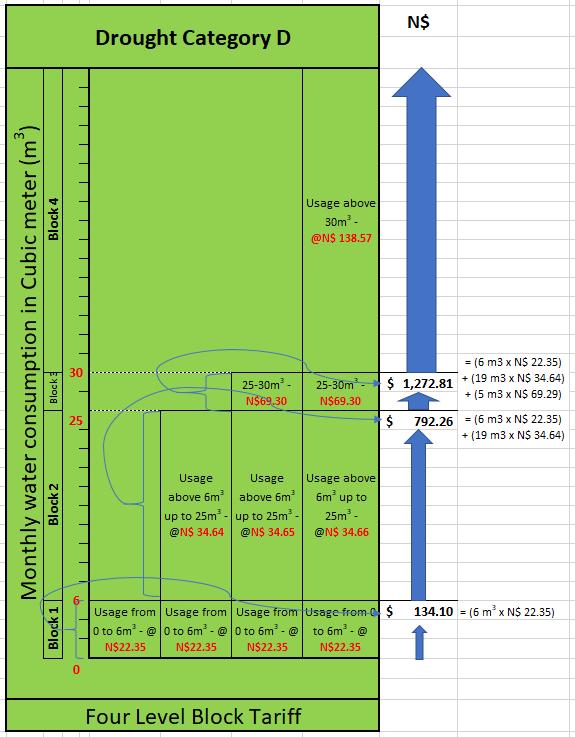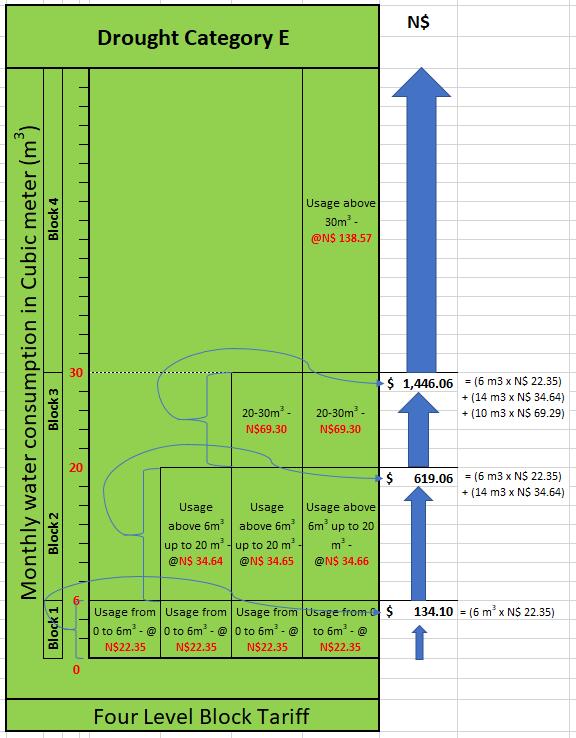
2 minute read
How to Calculate your water bill
extent, to have smaller reinforcing steel bars with moderate spacing than large bars with wide spaces. The optimum spacings can be determined by structural designs, so, be mindful of the role of the engineer. For simpler construction a steel mesh may help, though that does not replace the role of the engineer. Additionally, this phenomenon also happens when concrete is dried too quickly by either being exposed to the sun or simply in very hot environment. The water evaporates and leaves your floor cracked. So, avoid pouring concrete under hot weathers or the blazing sun.
Concrete may also undergo what is known as “thermal cracking”. Thermal effects such as temperature fluctuations makes concrete expand or contract seasonally. This is similar to that discussed under the wall cracks. The best solution is to install expansion/contraction joints. Additionally, large pours of concrete in large blocks may also result in cracks forming as the concrete heats up due to its own reactions, well known as exothermic reaction. This requires the attention of a specialist.
Advertisement
Floors built directly on the ground will be subject to differential settlement, as discussed earlier. Therefore, the concrete slab and the ground on which the floor is built will require special attention. The right approach will entail either sole application of appropriate steel reinforcement on the floor(s)/slab(s) under moderate ground conditions and/ or a check of the subsoil conditions by a geotechnical engineer. Conclusion
Your building can be designed, constructed and maintained without possessing unaesthetic cracks. But this would mean taking the benevolent measures to avoid the cracks. The saying in construction goes, “for every dollar you save in shortcuts while constructing a building, you will spend several dollars to fix the project”. Therefore, wisdom in construction is highly advised!


This simplified model explains exactly how to calculate your water bill based on your consumption and as per the four block tariff system. The city is currently in category B since June last year, down from Category C, hence one should use the formulas in Category B. • NB: The tariff for each block may change every year depending on the water price increase as passed on to City of Windhoek from NamWater. • Example: under category A & B • If your monthly consumption is under 6m³ (cubic meter), you will be charged 22.35 per m³ = 6m³ x N$22.35 = N$134.10 your water bill. • If you consume 30m³ per month, you will be charged the first 6m³ at 22.35 and the remaining 24m³ is charged at 34.64. = 6m³ x N$22.35 • + 24m³ x N$34.64 = N$965,22 • If you consume 50m³ per month, you will be charged the first 6m³ at N$22.35, the 24m³ at N$34.64 and the remaining 20m³ at N$69.29 = 6m³ x N$22.35 + 24m³ x
N$34.64) + 20m³ x N$69.29 = $2485,12 • Usage above 50m³ is charged at N$138.57 per cubic meter • So the higher your monthly water consumption the higher the charge per cubic meter. • Use this formula for all the other categories!












